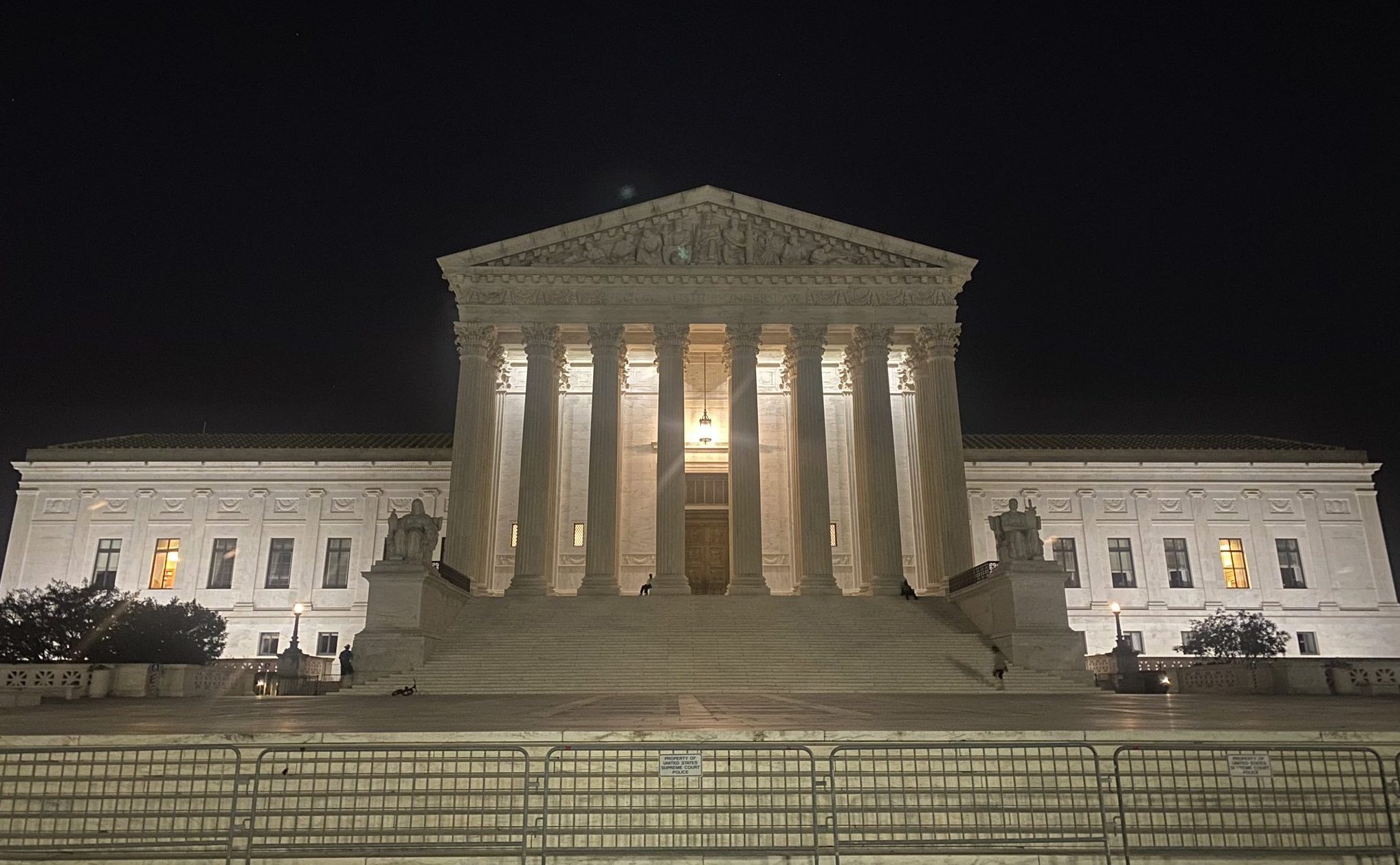Over sharp dissents, court intervenes to allow federal government to execute 13th person in six months

on Jan 16, 2021 at 2:44 am

The Supreme Court on Friday allowed the federal government to execute Dustin Higgs, reversing lower-court orders that had put the execution on hold and drawing strongly worded dissents from two justices.
Higgs’ execution was the third federal execution this week, and it concludes a push by the Trump administration to carry out death sentences before the inauguration of President-elect Joe Biden, who opposes capital punishment.
In a brief, unsigned ruling issued around 11 p.m., the justices reversed a federal district judge, who had concluded last month that he did not have the authority to green-light the execution. And the justices bypassed the U.S. Court of Appeals for the 4th Circuit, which had granted a stay of execution this week to allow time for that court to consider the final legal issue in the case.
The issue was a technical one: whether the government was permitted to administer Higgs’ execution in accordance with the law of Indiana, even though Higgs was convicted in Maryland and his sentencing order did not specify that he could be executed under Indiana law.
A majority of the Supreme Court ruled that the government’s plan was permissible. The court relied on a rarely used procedure to take over the case from the appeals court and designate Indiana as the governing law – a decision that allowed the government to immediately begin carrying out the execution.
Justices Stephen Breyer, Sonia Sotomayor and Elena Kagan indicated that they would not have permitted the execution to go forward. Breyer and Sotomayor each wrote dissents lamenting the recent flurry of executions – and the court’s role in allowing them to happen. In the past six months, the federal government executed 13 people, and it prevailed in every death-penalty appeal that reached the Supreme Court during that time.
“After waiting almost two decades to resume federal executions, the Government should have proceeded with some measure of restraint to ensure it did so lawfully,” Sotomayor wrote. “When it did not, this Court should have. It has not.”
Higgs, 48, was given a lethal injection and was pronounced dead at 1:23 a.m. on Saturday morning.
The Supreme Court’s Friday-night ruling came about 24 hours after the court denied an emergency appeal filed by Higgs and another person on death row, Corey Johnson. Both Higgs and Johnson had recently contracted COVID-19 in prison, and they argued that lung damage from the virus would create a risk of excessive suffering during their lethal injections. The court denied their request to suspend their executions while they recovered from the virus. Johnson was executed late Thursday night.
But one final legal obstacle stood in the way of the government’s planned execution of Higgs on Friday. Under the Federal Death Penalty Act, death sentences handed down in federal court must be implemented “in the manner prescribed by the law of the State in which the sentence is imposed.” If the underlying state does not have a procedure for capital punishment, the federal court that imposes the death sentence must designate another state as the relevant law to govern the execution.
Higgs was convicted in 2000 in federal court in Maryland for the killings of three women – Tamika Black, Tanji Jackson and Mishann Chinn – in the Patuxent National Wildlife Refuge. At the time he was sentenced, his formal sentencing judgment implicitly provided for Maryland law to govern his execution. But Maryland abolished capital punishment in 2013. That meant there was no longer any Maryland law for the government to apply under the Federal Death Penalty Act.
Last year, when the Department of Justice decided to move forward with Higgs’ execution, it asked a federal judge to amend Higgs’ sentencing judgment and designate Indiana law as the governing law. The federal execution chamber is located in Terre Haute, Indiana, and Higgs was in prison there for nearly 20 years.
On Dec. 29, U.S. District Judge Peter Messitte ruled that he lacked the authority to grant the government’s request to amend the sentencing judgment. When the government appealed, the 4th Circuit scheduled an oral argument on the issue for Jan. 27 – nearly two weeks after the government’s planned execution date. Then, on Wednesday, the 4th Circuit issued a stay of execution, formally putting the execution on hold while it reviewed the case.
The government came to the Supreme Court, asking it to lift the stay and designate Indiana law as the relevant state law under the FDPA. In a four-sentence order without an explanation of its reasoning, the court granted the government’s request.
Procedurally, the court’s ruling was highly unusual. It was an expedited decision on the merits of a case that came to the court as a petition for “certiorari before judgment” – legal jargon for a procedure in which the justices can intervene and resolve a case before a court of appeals has ruled. Such interventions are uncommon, and on the rare instances when the court does consider cases in that posture, it typically resolves them only after an oral argument and extended deliberation, neither of which occurred here.
In their dissents, Breyer and Sotomayor said the court was taking unusual and “extraordinary” measures to avoid fully confronting serious legal issues. Breyer accused the majority of adopting a “hurry up, hurry up” approach in this case and in other recent death penalty appeals.
“How just is a legal system that would execute an individual without consideration of a novel or significant legal question that he has raised?” Breyer wrote. Problems surrounding capital punishment, he continued, raise questions about its constitutionality – a point he has raised before.
Sotomayor began her dissent by listing the names of the 13 people executed by the federal government since last July, when the Trump administration ended a 17-year unofficial moratorium on federal executions. And she accused the court of essentially rubber-stamping these executions.
“Sadly, it is not surprising that the Court grants this extraordinary request,” she wrote of the decision to allow Higgs’ execution to occur. “Over the past six months, this Court has repeatedly sidestepped its usual deliberative processes, often at the Government’s request, allowing it to push forward with an unprecedented, breakneck timetable of executions. With due judicial consideration, some of the Government’s arguments may have prevailed and some or even many of these executions may have ultimately been allowed to proceed. Others may not have been. Either way, the Court should not have sanctioned these executions without resolving these critical issues. The stakes were simply too high.”


